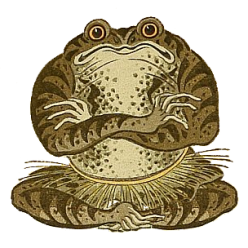I was just reading the latest news about the anti-Chen Shui Bian protests in Taipei when I saw it mentioned that they were camped out on Ketagalan Boulevard. Not recognizing the non-Chinese name of the street I nautrally punched it into Google. Ah, 凱達格蘭. Yes of course. Now, who or what is Ketagalan? As is often the case, Wikipedia has an answer.
Ketagalan 凱達格蘭 is a Taiwanese aboriginal tribe originating in what is now the Taipei Basin. Their language has now become extinct.
On 21 March 1996, the road in front of the Presidential Building was renamed from Chiang Kai-shek Boulevard (介壽路) to Ketagalan Boulevard by the Taipei City Government to commemorate this tribe. Traffic signs banning motorcycles and bicycles from that road were abolished at the same time.
Legend has it that their forebears originally lived on another island. One day, a ‘monster’ appeared on the island. Every night the monster would appear in the village, terrorizing the villagers.
Accordingly, the villagers laid traps for the monster all around their homes and fields. The wounded monster was forced back into the mountains and the village was peaceful again for a while. But soon afterward the monster reappeared. Crazed by hunger, the monster reached into a hut and seized a child.
The villagers lived in fear of being eaten by the monster and didn’t dare sleep a wink. The villagers debated heatedly but no one could think of a way to deal with the monster. So with no other choice, it was decided that they must pack up and leave the island. Following an arduous sea voyage, they sighted land. The island they landed on was Taiwan.
Many years later, the tribe was growing so one day the villagers agreed to draw straws. Those who drew long straws were permitted to remain living on the fertile plain while those drawing the short straws would have to move into the mountains. Thereafter, the villagers were separated into plain-dwelling and mountain-dwelling tribes.
If I were a KMT nationalist filmmaker during the days of the military dictatorship, I would make a film version of this story which actually takes place in the mythical past, but the “monster” is a symbol for Chairman Mao and the Chinese Communist Party. It would never be explicitly stated, but evident through symbolic use of colors and icons suggestive of both the CCP and KMT, the civil war, the famines of the Great Leap Forward, the oppression of the Cultural Revolution, etc.
Today it would be regarded as a classic of the propaganda genre, along with Leni Reifenstahl’s “Triumph of the Will” and D.W. Griffith’s “Birth of a Nation,” but like them would also be considered an uncomfortable reminder of an earlier time and rarely watched by any but serious students of film or history.
In 2012, Ang Lee, the world famous Taiwanese director known for his love of exploring new genres, would direct his first animated, a lavish fantasy story whose animation is inspired largely by Studio Ghibli’s painterly backgrounds, but with a greater use of computer graphics for special effects and management of large numbers of actors and objects in scenes of fast action. This first Taiwanese-made animated blockbuster would be widely hailed as evidence that Taiwan, like Korea and Japan before it, is beginning to overcome its image of being merely a technocratic and business-obsessed East Asian nation, and the Taiwanese press would, in a somewhat lame attempt to copy the corny but effective phrase “Korean wave” present it as the beginning of a Taiwan Typhoon of pop culture that would finally give the diplomatically isolated yet economically powerful island nation a taste of cultural soft power.
This film would, however, be a straight adaption of the myth, lacking the political undertons of the earlier Chiang Kai Shek era film. It would, however, alter the myth slightly to accomodate recent archaeological research indicating that Taiwanese aborigines who probably immigrated from what is now the Chinese mainland may in fact be the ancestors of the entire Malasian/Austronesian culture/linguistic people. The Ketagalan tribe of the film would flee from, instead of another island, the Mainland, and in the end they would not divide themselves between lowlanders and highlanders, but lowlanders, highlanders, and a third group who in the films melancholy conclusion once again set off in their flimsy wooden boats, in search of the unknown with nothing to guide them except the stars and their prayers.

you should make a rudimentary flash animation of this film with ms paint as the canvass